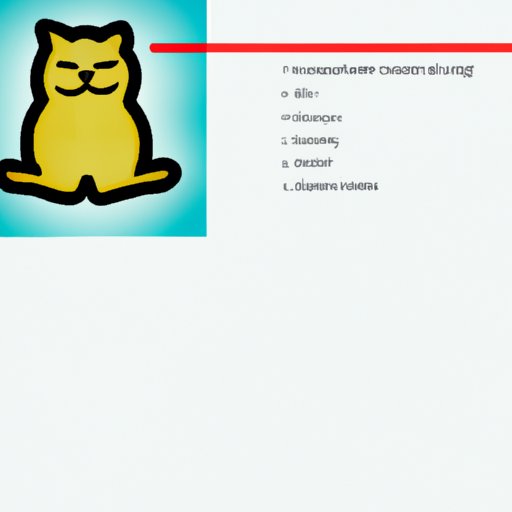Introduction
Positioning in marketing strategy refers to the process of creating a distinct image of your product or service in the minds of your target customers. It’s about differentiating yourself from your competition and establishing a unique identity that resonates with your audience. When done correctly, positioning can help you build a strong brand, increase customer loyalty and drive sales.
How to Develop a Winning Positioning Strategy
Developing a winning positioning strategy requires careful consideration of your target market, your competitors, and your unique value proposition. Here are the key steps to take:
Identifying Target Market
The first step is to identify your target market. Who are they? What do they want? How can you meet their needs? Understanding your target market will help you create a positioning strategy that appeals to them.
Understanding Competitors
Next, you need to understand your competitors. What makes them stand out? What do they offer that you don’t? Knowing what your competitors are doing will help you craft a positioning strategy that sets you apart from them.
Crafting a Unique Value Proposition
Finally, you need to create a unique value proposition. What sets you apart from your competition? What problem does your product or service solve? Your unique value proposition should be at the core of your positioning strategy.

Positioning Strategies for Different Types of Products
The type of product or service you offer will influence your positioning strategy. Here are some tips for different types of products:
Services
For service businesses, it’s important to focus on customer experience. Highlight the convenience, reliability and trustworthiness of your service. Demonstrate how you can save customers time and money.
Luxury Goods
For luxury goods, emphasize the exclusivity and quality of your product. Focus on the craftsmanship and attention to detail that make your product stand out. Showcase the superior design and materials used in your product.
Technology Products
For technology products, focus on innovation and usability. Highlight the features and benefits that make your product unique. Showcase how your product can simplify complex tasks and make life easier for your customers.
Consumer Goods
For consumer goods, emphasize the affordability and convenience of your product. Showcase how your product can make life easier for your customers. Focus on the quality and value of your product.
Examples of Successful Positioning Strategies
Some of the most successful companies have implemented effective positioning strategies. Here are a few examples:
Apple
Apple has positioned itself as the premium tech brand. It emphasizes its sleek design, innovative features and user-friendly interface. It has become synonymous with quality and reliability.
Nike
Nike has positioned itself as the go-to brand for athletes and sports fans. It emphasizes its commitment to performance and innovation. It has become associated with success and pushing the limits.
Red Bull
Red Bull has positioned itself as the ultimate energy drink. It emphasizes its ability to give consumers an extra boost of energy when they need it. It has become synonymous with having fun and staying energized.

The Benefits and Challenges of Positioning
Positioning can be a powerful tool for any business, but it’s not without its challenges. Here are some of the benefits and challenges of positioning:
Benefits
The benefits of positioning include:
- Increased Brand Recognition – Positioning helps you establish a strong brand identity that resonates with your target customers.
- Improved Targeting Capabilities – Positioning allows you to better target specific customer segments and tailor your messaging accordingly.
- Enhanced Customer Loyalty – Positioning helps you build relationships with customers by providing them with a consistent experience.
Challenges
The challenges of positioning include:
- Misunderstanding Your Audience – It’s important to understand who your target customers are and what they want. If you don’t get this right, your positioning strategy could fail.
- Changing Positioning Over Time – As your business evolves, so too should your positioning strategy. It’s important to keep up with changing trends and stay relevant to your target customers.
- Difficulty in Measuring Results – Positioning is a long-term strategy, so it can be difficult to measure the results. It may take time for your positioning efforts to pay off.

Tips for Crafting an Effective Positioning Strategy
Here are some tips for crafting an effective positioning strategy:
- Know Your Audience – Understand who your target customers are and what they care about. This will help you create a positioning strategy that resonates with them.
- Differentiate Yourself from Competitors – Know what sets you apart from your competitors and use this to your advantage. Focus on your unique value proposition.
- Establish an Emotional Connection – Create an emotional connection with your target customers by telling stories and highlighting the human side of your business.
- Focus on Long-Term Goals – Positioning is a long-term strategy, so it’s important to focus on the big picture and set realistic goals.
What the Future Holds for Positioning in Marketing
As technology continues to evolve, so too will positioning in marketing. Here are some of the changes we can expect to see in the future:
Growing Use of Digital Platforms
Digital platforms such as social media and search engines will play an increasingly important role in positioning. Companies will need to leverage these platforms to reach their target customers and establish a strong brand presence.
Increasing Importance of Data and Analytics
Data and analytics will become increasingly important for positioning. Companies will need to use data to track customer behaviour and optimize their positioning strategies.
Increased Focus on Sustainability
Sustainability will become an increasingly important factor in positioning. Companies will need to demonstrate their commitment to environmental and social responsibility if they want to stand out from the crowd.
Conclusion
Positioning in marketing strategy is an essential element for any successful business. It can help you differentiate yourself from your competition, build a strong brand, and increase customer loyalty. However, it’s important to understand the benefits and challenges of positioning and to develop a strategy that resonates with your target customers. By leveraging digital platforms, data and analytics, and focusing on sustainability, you can create a winning positioning strategy that will set you apart from your competition and help you achieve your long-term goals.
(Note: Is this article not meeting your expectations? Do you have knowledge or insights to share? Unlock new opportunities and expand your reach by joining our authors team. Click Registration to join us and share your expertise with our readers.)
